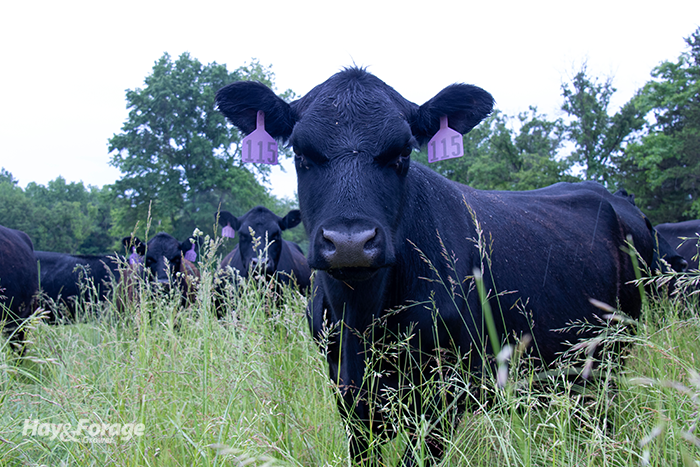
As the summer progresses, so does forage maturity, insect pressure, and the heat index. Thus, the combination of irritating grass seedheads, higher fly populations, and heat-stressed cattle is a recipe for greater pinkeye concerns.
In an article from North Dakota State University (NDSU) Extension, Jake Galbreath explains that pinkeye causes inflammation of and irritation to the surface of the eye and the tissue inside the eyelid. If left untreated, the veterinarian and livestock stewardship specialist notes pinkeye can spread within the herd, affecting animal productivity, profitability, and possibly causing blindness.
Pinkeye is caused by bacteria, and infections occur when natural barriers around animals’ eyes are broken. This can happen in environments where blowing dust; ultraviolet (UV) light; tall, coarse forages; or tail switching in crowded herds can irritate these natural barriers. Heat-stressed animals may also have weaker immune systems, raising the risk of infection.
“Providing shade from UV light, reducing dust in pens, managing pastures to avoid overgrazing, and grazing around coarse vegetation can all limit irritation and trauma to the eye,” says Lacey Quail, an NDSU Extension livestock management specialist. Clipping pastures to remove forage seedheads can also help reduce pinkeye incidence. Even so, some cattle are more susceptible than others, including white-faced cattle that are more sensitive to UV light and calves with less-developed immune systems.
While environmental factors can affect individual animals, pinkeye is highly contagious and spreads throughout the herd via face flies that are attracted to and feed on eye secretion. Various methods of fly control can help mitigate pinkeye infections; however, product selection and application timing and duration are critical to effectiveness.
See the early signs
Cattle can exhibit the first signs of pinkeye 12 to 72 hours after exposure, but these signs may be easy to overlook. Monitor the herd for animals with watery eyes, tear-stained faces, and those that are squinting or holding their eyes shut, as these conditions can attract flies and exacerbate the spread of pinkeye.
As pinkeye worsens, a cloudy spot in the center of the eye or a halo around the edges of the eye may occur. Ulcers can eventually develop, which will likely cause permanent damage or blindness.
Even though some animals infected with pinkeye may not experience anything more than increased tear production and mild inflammation, Galbreath notes they can be a source of infection for the flies that spread disease throughout the herd. He recommends separating affected cattle from the rest of the group until these animals have fully recovered.
Pinkeye often requires treatment, and options include antibiotics, anti-inflammatory medications that can help relieve irritation and comfort animals, and topical medications, although this approach may be impractical since topical treatment usually requires multiple applications per day. Vaccines are also available, but farmers should work with a veterinarian to determine what type of bacteria caused the outbreak and develop a targeted treatment program.
“Protecting the affected eye from sunlight and dust by applying a patch over the eye, suturing the eye closed, or suturing the third eyelid over the eye can help with healing,” Galbreath suggests. With that said, the success rate of any kind of pinkeye treatment is highly variable. Early intervention is the best form of defense.

